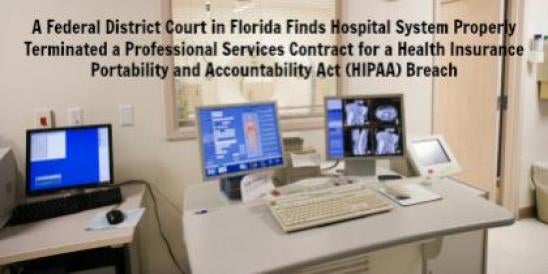On March 31, 2014, the Senate gave final approval to the Protecting Access to Medicare Act of 2014 (the Act), which includes significant reforms to the way Medicare pays for clinical diagnostic laboratory services. The House approved the Act on March 27, and the president is expected to sign the legislation.
Under the Protecting Access to Medicare Act of 2014 (the Act), Congress adopted a substantially different pathway for setting payments under the Medicare Clinical Laboratory Fee Schedule (CLFS). These reforms are intended to modernize the CLFS by moving away from a payment system based upon historical charge data that are now nearly 30 years old and moving to a market-based payment system intended to provide accurate, transparent and timely rate-setting determinations for clinical laboratory services. Congress also adopted certain coding and coverage reforms alongside the payment reforms.
Market-Based Rate Setting
Under the Act, laboratories that receive the majority of their Medicare revenues from payments made under the CLFS or the Physician Fee Schedule would report, beginning January 1, 2016, and then on an every three year basis thereafter (or annually for advanced diagnostic laboratory tests), private payor payment rates and volumes for their tests. Private payors include health plans, Medicare Advantage plans and Medicaid managed care organizations.
The Centers for Medicare and Medicaid Services (CMS) will used the rates and volumes reported by laboratories to develop Medicare payment rates for the tests equal to the volume-weighted median of the private payor payment rates for the tests. The payment rates calculated under the Act will be effective starting January 1, 2017. Any reductions to payment rates resulting from the new methodology are limited to 10 percent per test per year in each of the years 2017 through 2019 and to 15 percent per test per year in each of 2020 through 2022.
The Act eliminates CMS’ controversial new rule under which CMS planned to reassess rates for individual clinical laboratory tests paid under the CLFS considering “technology changes.”
Congress also increased the test collection fee from $3 to $5 for samples collected from individuals in a skilled nursing facility or by laboratories on behalf of a home health agency.
Advanced Diagnostic Lab Tests
Congress adopted a somewhat different pathway for certain tests developed and performed by single laboratories—tests referred to as “advanced diagnostic laboratory tests.” For these tests, laboratories are required to report private payor rates on an annual basis, beginning in January 2016, and payment rates based upon such reports will begin in January 2017. The initial payment rate (for a period not to exceed nine months) for an advanced diagnostic laboratory test will be set at the “actual list charge” for the test as reported by the laboratory. Insofar as the actual list charge substantially exceeds private payor rates, when reported, CMS will have the ability to recoup payments in excess of 130 percent of the weighted median of reported private payor rates that were made during the initial nine-month payment period. Laboratories offering advanced diagnostic laboratory tests will need to pay careful attention to CMS rules and procedures for reporting the actual list charge to reduce the risk of recoupment.
The Act defines an “advanced diagnostic laboratory test” as a test “offered and furnished only by a single laboratory and not sold for use by a laboratory other than the original developing laboratory (or a successor owner)” and which is either (a) “an analysis of multiple biomarkers of DNA, RNA, or proteins combined with a unique algorithm to yield a single patient-specific result” or (b) a test that “is cleared or approved by the Food and Drug Administration.” CMS may expand the scope of advanced diagnostic laboratory tests to include other, similar single laboratory tests.
Expert Advisory Panel and New Test Rate Setting
In order to ensure that payment and coverage decisions are made in a transparent and reliable fashion, the Act requires CMS to convene a Federal Advisory Committee Act-compliant panel of outside advisors, including clinicians and other technical experts. The panel will review and provide input to CMS on payment rates and coverage issues. While non-specific about the size and specific members of the panel, it is intended to encompass individuals with appropriate expertise in molecular pathology, research, laboratory sciences and health economics. The panel shall be established no later than July 1, 2015.
It is unclear how often the panel will meet or precisely how its input will factor into CMS’ ultimate decision making; however, it is clear that Congress intends for the panel’s input to contribute significantly to CMS’s coverage and rate-setting decisions. The panel should help address criticisms that CMS’ existing rate-setting process is not sufficiently transparent and that decision makers do not necessarily have the broad range of expertise important in making decisions about coverage and payment for modern laboratory testing.
The panel does not replace the current annual public meeting where CMS accepts recommendations from stakeholders as to whether rates for new tests should be assigned through gapfill or crosswalk. The Act specifies that for tests that are not advanced diagnostic laboratory tests, where a new or substantially revised Healthcare Common Procedure Coding System (HCPCS) code is established after the date of enactment of the Act, CMS must follow either the crosswalk or gapfill process to determine the initial payment rates. In addition, CMS is required to make available an explanation of how the gapfill criteria and recommendations from the advisory panel have been applied. The crosswalk versus gapfill process set forth in the Act mirrors the existing process used by CMS; however, by codifying the process, Congress is providing clear legislative direction for CMS’ rate-setting activities for new clinical laboratory tests.
Coding Changes
The Act also updates the processes by which new laboratory tests are coded by Medicare. CMS is now required to adopt temporary HCPCS codes to identify new “advanced diagnostic laboratory tests” and new tests that are cleared or approved by the Food and Drug Administration (FDA). These temporary codes will be effective for a period of up to two years pending the adoption of a permanent HCPCS or Current Procedural Terminology (CPT).(CPT is a registered trademark of the American Medical Association.)code. In addition, by 2016, all advanced diagnostic laboratory tests and tests cleared or approved by the FDA, which are currently paid under the CLFS without unique codes, will be assigned unique HCPCS codes. This should reduce coverage and payment uncertainties associated with the current practice of using non-specific or not-otherwise-classified codes. The requirement for specific temporary coding should assist laboratories and manufacturers to commercialize new tests for which uncertainty or delay in obtaining test-specific codes has currently hindered market adoption.
The Act also requires CMS to establish unique identifiers for advanced diagnostic laboratory tests or tests cleared or approved by the FDA. The unique identifiers will be assigned upon request by a laboratory or a manufacturer. The unique identifiers are intended to allow tracking or monitoring of specific tests at a more granular level than currently may be feasible under established CPT codes. Unique identifiers may be established as HCPCS codes, modifiers or through other means. Congress appears to be acknowledging the value of tracking individual tests, as has currently been accomplished through test identifiers under the MolDx program administered by Palmetto GBA, one of the Medicare Administrative Contractors (MACs).
Coverage Requirements
In another nod to increasing transparency and non-arbitrary decision making, the Act has codified coverage rules for laboratory tests by requiring any local coverage determination to be made following the development and appeals processes for local coverage determinations as set forth in Section 1869(f)(2)(B) of the Social Security Act and regulations at 42 CFR 426. By requiring contractors to follow these well-known and widely accepted processes, Congress is stressing the importance of fair and open coverage decisions.
The Act also authorizes CMS to consolidate coverage policies for clinical laboratory tests among one to four laboratory-specific MACs. These same contractors may also be designated to process claims if CMS determines that such a model is appropriate. This contracting model is similar to the current coverage and claims processing model for durable medical equipment (DME), where there are four regional DME-MACs who set uniform coverage and payment policies for DME. Concentrating coverage and claims processing functions in specialized contractors has been shown to improve the integrity of Medicare coverage and claims processing for DME. Extending these models to clinical diagnostic laboratory services would be expected to increase the accuracy and reliability of Medicare coverage and payment decision making for clinical laboratory services.
Oversight
Congress appears committed to assuring that the Act has the intended effect of modernizing the CLFS and has provided two levels of oversight by the U.S. Government Accountability Office (GAO) and the Office of Inspector General (OIG) of the Department of Health and Human Services . Congress has instructed the GAO to analyze the impacts of the Act on beneficiaries and laboratories. The GAO report will also identify trends in coding, rate setting and utilization. The report is due not later than October 1, 2018.
Furthermore, Congress tasked the OIG with monitoring the implementation and effects of the new payment system, as well as compiling an annual report of the top 25 laboratory tests by expenditures.
Outstanding Issues
The Act makes significant strides in modernizing a payment system that dates from the 1980s and has not undergone substantial modifications since its inception. However, it raises a number of questions that, hopefully, will be addressed upon implementation of the new rules.
The relationship between Medicare’s public rates and private payor contracted rates has been understood by many to be tightly interwoven. Will tying Medicare rates to private payor rates change the dynamics of laboratory contracting with private payors?
Will rates that are set based upon reporting on an every-three-year basis improve or reduce laboratories’ confidence in predicting revenue forecasts?
How will CMS synchronize the initial periods of pricing for new advanced diagnostic laboratory tests with the permanent (annual reporting-based) rate setting process?
How will CMS incorporate recommendations from the advisory panel with recommendations received during its annual public meeting? Will the advisory panel process make the annual public meeting moot?
Conclusion
Laboratories and manufacturers generally supported this move toward a market-based payment system and so should be encouraged by its adoption. The added predictability and transparency of this process should facilitate the adoption and use of novel clinical laboratory tests offered by innovator manufacturers and laboratories alike.





 i
i

